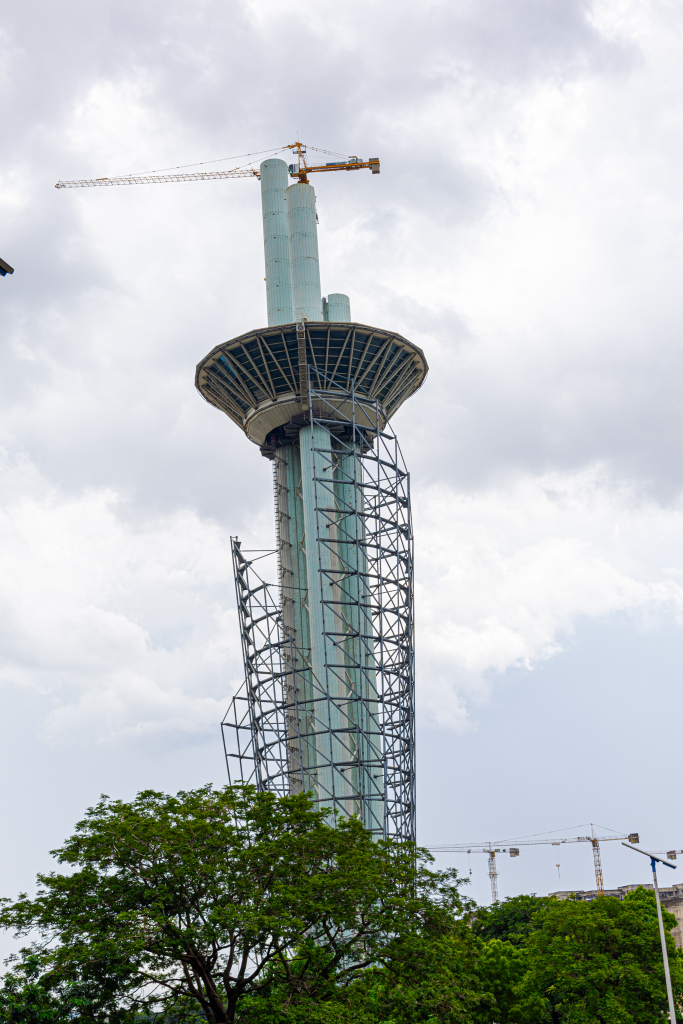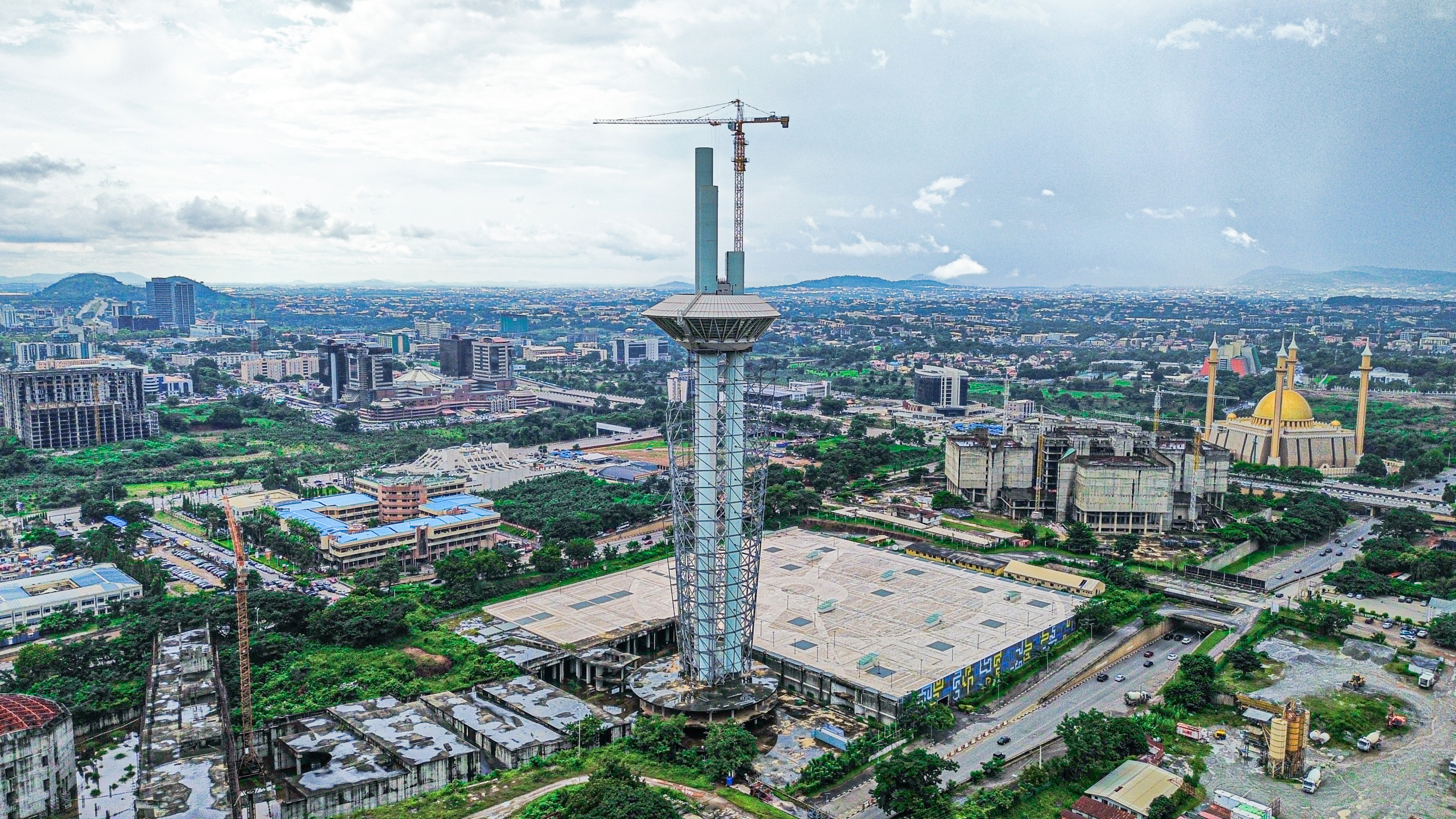Abuja’s Millennium Tower and Cultural Centre—a 170‑meter mixed-use landmark conceived in 2005 and topped out in 2014—was intended to be Nigeria’s premier icon in the Central Business District. Designed by Italian architect Manfredi Nicoletti and initially budgeted at ₦53 billion, the tower boasts a revolving restaurant, observation deck, museum halls, hotel, wellness centre, and cultural spaces. Despite its promise, construction stalled around 2017, halting progress and raising questions about funding priorities. Now about 40% complete, the project awaits massive investment—an estimated ₦200 billion (~US$400 million)

Why Has Abuja Millennium Tower Stalled?
1. Chronic Funding Shortfalls
Despite a ₦69.3 billion initial spend, Millennium Tower suffered funding lapses from 2016 onward when nothing appeared in FCT budgets, severely disrupting construction momentum. Reports indicate the construction is marooned due to “paucity of funds,” with the FCT minister waving off completion in 2024 amid a spike in projected costs.
2. Escalating Cost Overruns
The budget has ballooned—from ₦50 billion to ₦69.3 billion, then to ₦100 billion, with the latest estimates pushing beyond ₦200 billion. Contractors have submitted ₦4.9 billion in extensions and compensation claims, citing delays and price variances.
3. Procurement & Administration Bottlenecks
The project spans three FCTA administrations, each with shifting priorities and inconsistent budget lines. Frequent halts—particularly in 2016, 2017, and under the current minister—have triggered contractual disagreements, claims, and extensions .
4. Insufficient Private‑Sector Engagement
Although government officials have publicly called for private-sector involvement—especially to bridge the gap of around US$400 million—privatisation efforts have lacked incentives, dampening investor interest.
Real Estate Implications: Why This Matters
- Prime CBD Parcel Underutilised
The Tower sits on de facto high-value land in Abuja’s CBD—a hub of commercial, cultural, and political activity. An active masterpiece here could anchor luxury offices, residential apartments, hospitality venues, and retail spaces. - Investor Sentiment & Spillover Effects
An incomplete landmark erodes confidence in the larger district. Developers delay or scale down projects when core infrastructure is in limbo, stalling neighbourhood rejuvenation. - Proximal Property Premiums Suppressed
Finished landmark proximity usually drives premiums. With Millennium Tower stalled, premium property values remain artificially depressed, dampening returns on neighbouring real estate. - Cultural & Tourism Potential Wasted
Upon completion, the tower stands to boost cultural tourism, draw international visitors, and support mixed-use estates. Its stalled status prevents ancillary development and associated job creation.
Content Sections to Build Blog Authority
A. The Funding Labyrinth
Track the financial journey: start in 2005 at ₦53 billion; progress to ₦69.3 billion; then track the spirals to ₦100 billion and ₦200 billion+, with contractors’ N4.9 billion claims. Provide absolute dates (e.g., budget omissions in 2016–17, stalled in 2017).
B. Real Cost of Delay
Explore how delay impacts Abuja’s real estate ecosystem—spanning development pipeline halts, price stagnation, and opportunity costs.
C. Private‑Public Models & Real Estate
Analyze opportunity structures like build‑operate‑transfer partnerships and cultural bond instruments. Show comparative case studies domestically or in West Africa, demonstrating win–win economic models.
D. Strategic Local Investment Outlook
Project two scenarios: “Finish” vs. “Not Finish.” Compare residential/commercial yield predictions, rental growth, and market performance across both.
E. Lessons for Abuja Developers
Recommend phased development paired with investment guarantees; escrow‑funded capital tranches; political risk insurance; stakeholder coalitions between federal, local, private investors, and management groups.
Positioning A.I Realent Global Resource Ltd
- Market Intelligence: Share proprietary mapping of active and ideal investment corridors, measuring adjacency to projects like Millennium Tower.
- Investment Navigation: Provide guidance connecting developers, investors, and municipal agencies with negotiation know‑how.
- Advocacy & Thought Leadership: Host roundtables highlighting PPP models, infrastructure‑led development, township regeneration, cultural anchoring, and catalytic real estate financing.
Conclusion
The Millennium Tower’s saga is more than a building foible—it’s a mirror of central themes in Nigerian real estate: funding fragility, coordination failure, policy uncertainty, and unrealized catalyst potential. Your blog—aided by these insights—can establish A.I Realent Global Resource Ltd as the authoritative voice for landmark‑adjacent real estate strategy. Offer readers clarity and confidence that, while risks exist, informed investing remains possible.


![Freehold Land Tenure System in Nigeria: Complete Guide [2025] 4 Land tenure min](https://airealent.ng/wp-content/uploads/2025/10/Land-tenure-min-592x444.png)